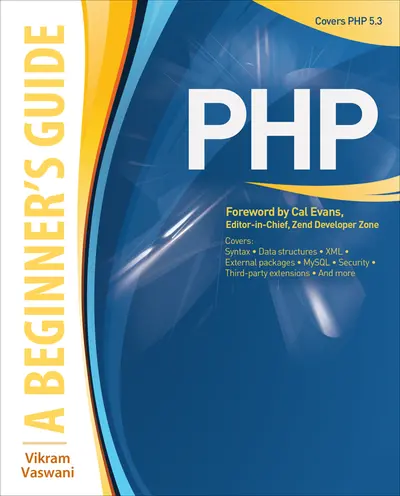My Account Details

ISBN10: 0071549013 | ISBN13: 9780071549011

Step 1 . Download Adobe Digital Editions to your PC or Mac desktop/laptop.
Step 2. Register and authorize your Adobe ID (optional). To access your eBook on multiple devices, first create an Adobe ID at account.adobe.com. Then, open Adobe Digital Editions, go to the Help menu, and select "Authorize Computer" to link your Adobe ID.
Step 3. Open Your eBook. Use Adobe Digital Editions to open the file. If the eBook doesn’t open, contact customer service for assistance.
Publisher's Note: Products purchased from Third Party sellers are not guaranteed by the publisher for quality, authenticity, or access to any online entitlements included with the product.
Essential Skills--Made Easy!
Learn how to build dynamic, data-driven Web applications using PHP. Covering the latest release of this cross-platform, open-source scripting language, PHP: A Beginner's Guide teaches you how to write basic PHP programs and enhance them with more advanced features such as MySQL and SQLite database integration, XML input, and third-party extensions. This fast-paced tutorial provides one-stop coverage of software installation, language syntax and data structures, flow control routines, built-in functions, and best practices.
Designed for Easy Learning:
- Key Skills & Concepts--Lists of specific skills covered in the chapter
- Ask the Expert--Q&A sections filled with bonus information and helpful tips
- Try This--Hands-on exercises that show how to apply your skills
- Notes--Extra information related to the topic being covered
- Tips--Helpful reminders or alternate ways of doing things
- Cautions--Errors and pitfalls to avoid
- Self-Tests--Chapter-ending quizzes to test your knowledge
- Annotated Syntax--Example code with commentary that describes the programming techniques being illustrated
Chapter 1. Introducing PHP
Chapter 2. Using Variables and Operators
Chapter 3. Controlling Program Flow
Chapter 4. Working with Arrays
Chapter 5. Using Functions and Classes
Part II: Working with Data from Other Sources
Chapter 6. Working with Files and Directories
Chapter 7. Working with Databases and SQL
Chapter 8. Working with XML
Chapter 9. Working with Cookies, Sessions, and Headers
Part III: Security and Troubleshooting
Chapter 10. Handling Errors
Chapter 11. Securing PHP
Chapter 12. Expanding PHP
Part IV: Appendixes
Appendix A. Installing and Configuring Required Software
Appendix B. Answers to Self Test
Index
Need support? We're here to help - Get real-world support and resources every step of the way.